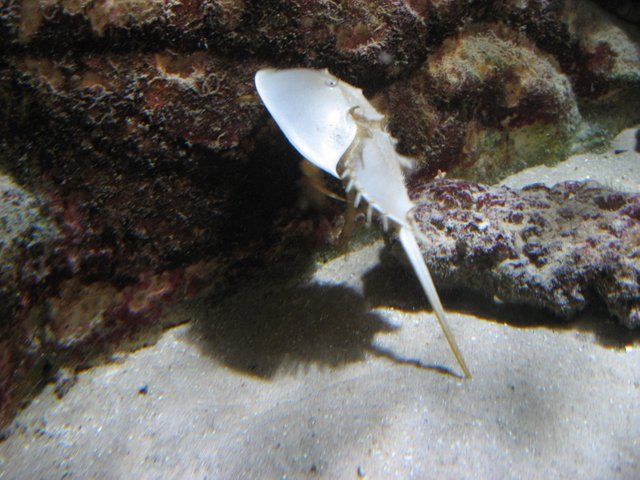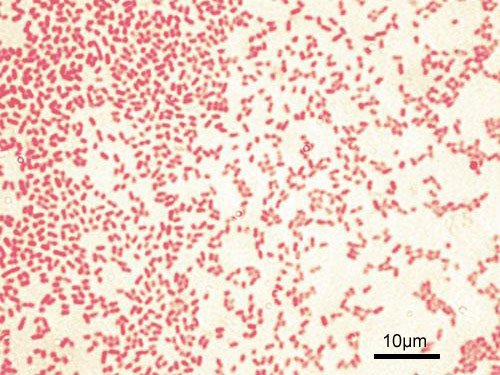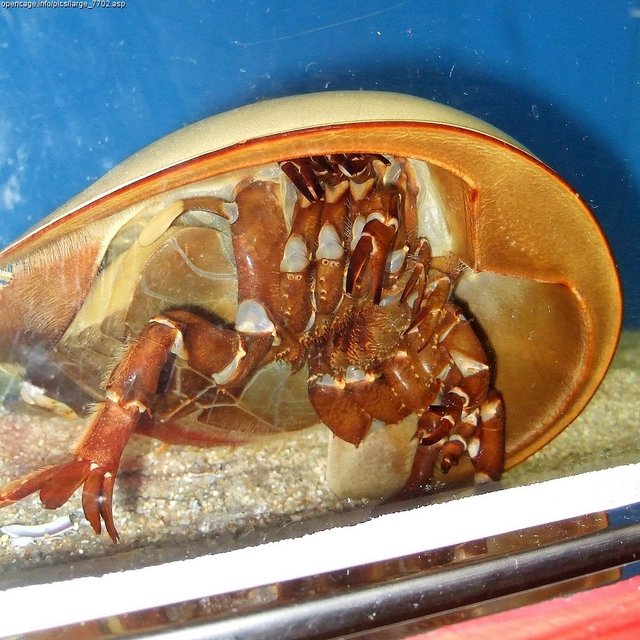Blood from the Atlantic Horseshoe Crab is used to test for bacterial contamination of pharmaceuticals and medical equipment
The Atlantic Horseshoe Crab (Limulus Polyphemus) is a really fascinating animal. For starters, the species is considered to be 450 million years old, so it is truly a living fossil. In addition to that, their blood has a very unique property that are saving lots of lives each year. It is ecologically important to birds as well as being used for fish bait, but let us take a closer look at its life-saving properties.
What exactly is a horseshoe crab?
The Atlantic horseshoe crab is an arthropod that is found in the sea outside of the coast of America. It is most commonly found in or around the gulf of Mexico, and has a long tradition of being used as easy and cheap fishing bait in the area. As you can see from the images, it has a very ancient look to it, and this is also reflected in some of its physiology, such as not having a jaw at all.

An image of the Atlantic horseshoe crab. Image by I, Liné1, posted with the Creative Commons Attribution-Share Alike 3.0 Unported license.
The horseshoe crabs does not have any hemoglobin in their blood, but instead uses hemocyanins to transport oxygen around the body. This is actually really cool, because the copper found in the hemocyanins makes the blood blue, not red like what we find in most other species. And as you’ve read in the title, their blood has a much more interesting aspect as well!
How the horseshoe crab’s blood is used to check medical equipment for contamination
The blood of the horseshoe crabs has a type of cell called an amebocyte. These cells play a role similar to the white blood cells of mammals, and protects the animal from pathogens. From these cells we can extract a solution called limulus amebocyte lysate (usually shortened to LAL). This solution is what is used to detect containments on medical equipment such as needles or any stuff that has been in contact with blood, and is commonly used in hospitals around the world. However, to understand the reason for this, we need to delve a bit into the biology of bacteria, so keep on reading to understand how the limulus amebocyte lysate actually functions.
How the limulus amebocyte lysate detect bacterial containment
All bacteria are divided into two groups: gram-positive or gram-negative. The difference is mostly based on the cell membrane structure, but for the rest of this post we are looking specifically at gram-negative bacteria. These all have lipopolysaccharides in their outer cell membrane, and this molecule is usually known as LPS or endotoxins. I don’t want to delve too deep into biochemistry right now, so we are not going into the chemical details of this molecule, but what you need do know is that this molecule is triggering a strong immune response in animals, which essentially means we’re getting sick if we have many of them in our bodies.

Pseudomonas aeruginosa, a gram-negative bacteria. Image by Y_tambe, posted with the Creative Commons Attribution-Share Alike 3.0 Unported license.
There are lots of deaths from endotoxins all over the world, so getting infected by gram-negative bacteria could be fatal. In contrast to most other toxins, this is not secreted by the bacterium, but is a part of its structure, and gets released once the cell dies. This means that things could get bad once you start treatment to get rid of the bacterial infection, but this is rarely a problem is modern countries that monitors which bacterial infections you have.
The important fact to take away from the endotoxins being released upon death instead of being secreted is that it will still be there after the bacteria dies. So if we have an infected piece of equipment that we for example sterilize by burning it (which is not really a great sterilization method, but is used in many parts of the world), the bacteria will die, but it will still have a huge amount of endotoxins present. This means that the endotoxins can be a problem even with simple sterilization methods.
How the LAL test functions
Anyway, let us get back to the horseshoe crab and specifically the limulus amebocyte lysate solution. If this solution gets in contact with any LPS / endotoxins, it will coagulate, and easily let you know that your medical equipment is contaminated by endotoxins from gram-negative bacteria. This LAL-test is pretty reliable, so it is a great way to make sure you don’t infect someone with endotoxins.
The LAL-test will also roughly quantify the presence of endotoxins, simply by how much it coagulates.

Another image of the Atlantic horseshoe crab. Image by OpenCage, posted with the Creative Commons Attribution-Share Alike 2.5 Generic license.
Conservation efforts for the Atlantic horseshoe crab
Before the discovery of this amazing test, the horseshoe crab was heavily harvested for easy bait used for fishing. The animal is very easy to catch in large numbers, and lots of animals were captured, killed and used for bait each year. The population declined for a while, but it is healthy at the moment.
When the horseshoe crab is harvested for its blood, it is not killed, and instead drained for some of its blood before being released back to where it was captured. This is of course a much better way to get the chemicals than to outright kill them, and is obviously much more sustainable. However, LAL manufacturers admit to the fact that about 3 % of the captured animals die due to blood loss or stress. It might not sound like a lot, but scientific estimates actually think the number might be closer to 15 – 30 % that die, so it seems to be somewhat problematic for the species.
No one is currently able to produce limulus amebocyte lysate synthetically, so for now, the horseshoe crab is our only source of it. This makes it really important to manage the species in a way that ensures a healthy population, and having a big population of the animals is extremely beneficial for humans.
Thanks for reading
Thanks for reading about the important chemicals we harvest from the Atlantic horseshoe crab. I hope you enjoyed the post, and don’t be afraid to leave a comment below with any comments, questions or additions!
About the author
Hi, I’m @valth! I live in Norway with my girlfriend, our newborn son, and our two dogs, one of which is seen wearing a bow tie in the profile picture!
I am very passionate about nature and biology, and have been studying ecology for a few years now. My passions are mostly within conservation biology, mycology (the studies of mushrooms), animal behavior and general microbiology. I really enjoy both the theoretical aspect, as well as the more practical aspect of biology, and I spend about as much time in front of biology textbooks as I do spend on finding and identifying plant, mushroom and animal species in the forests.
Make sure to hit the big follow button above to go to my profile and follow me! This will make sure all of my posts end up right in your feed, and you can get your daily dose of biology news without any hassle :)

Your post is really informative, Valth! Thanks for sharing it :)
Upvoted & Followed.
Thanks, I am glad you liked it! :)
This same principle applies in the kitchen. Say there is a piece of raw meat left in the "danger zone" long enough for bacteria to reproduce and contaminate the meat. The well-meaning cook realizes the meat may have been left out long enough to become tainted, but believes the high heat from the pan will kill all bacteria present, and Voilà! The food is safe to eat. But wait! Those same endotoxins you've explained are present in the food, and everyone who consumes it becomes seriously ill. I learned that in a food safety course I took in high school ;)
I like your post!! Growing up close to a beach with a healthy horseshoe crab population, I was lucky to have interacted with this species in its natural environment as a little girl. They really are fascinating in a lot of ways. Thank you for sharing :)
Yea, this is true, and is also the main reason why people should not reheat their rice. Rice attracts a lot of gram-negative bacteria that could make your very sick, so it is best to throw it away after a few hours. So the best practice is to put everything in the fridge, where the bacteria will not reproduce very fast.
I am glad you liked it! I can imagine that growing up with those around would be very cool! I have not ever been able to see one myself, but that is something I would like to find if I ever find myself in the US :)
Great post! You might find the work of this designer interesting - http://www.ted.com/talks/christien_meindertsma_on_pig_05049
She wrote a book on how every part of a pig is used in a variety of industries.